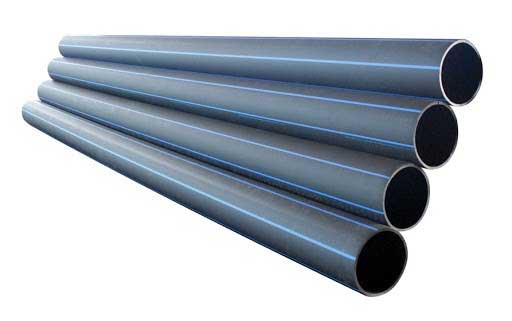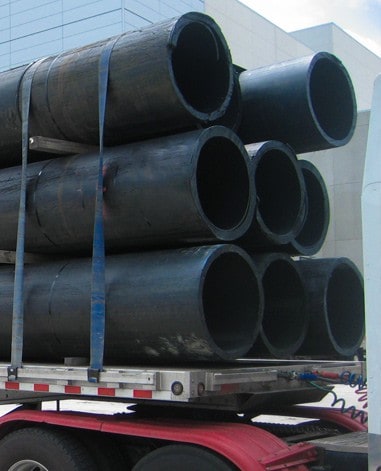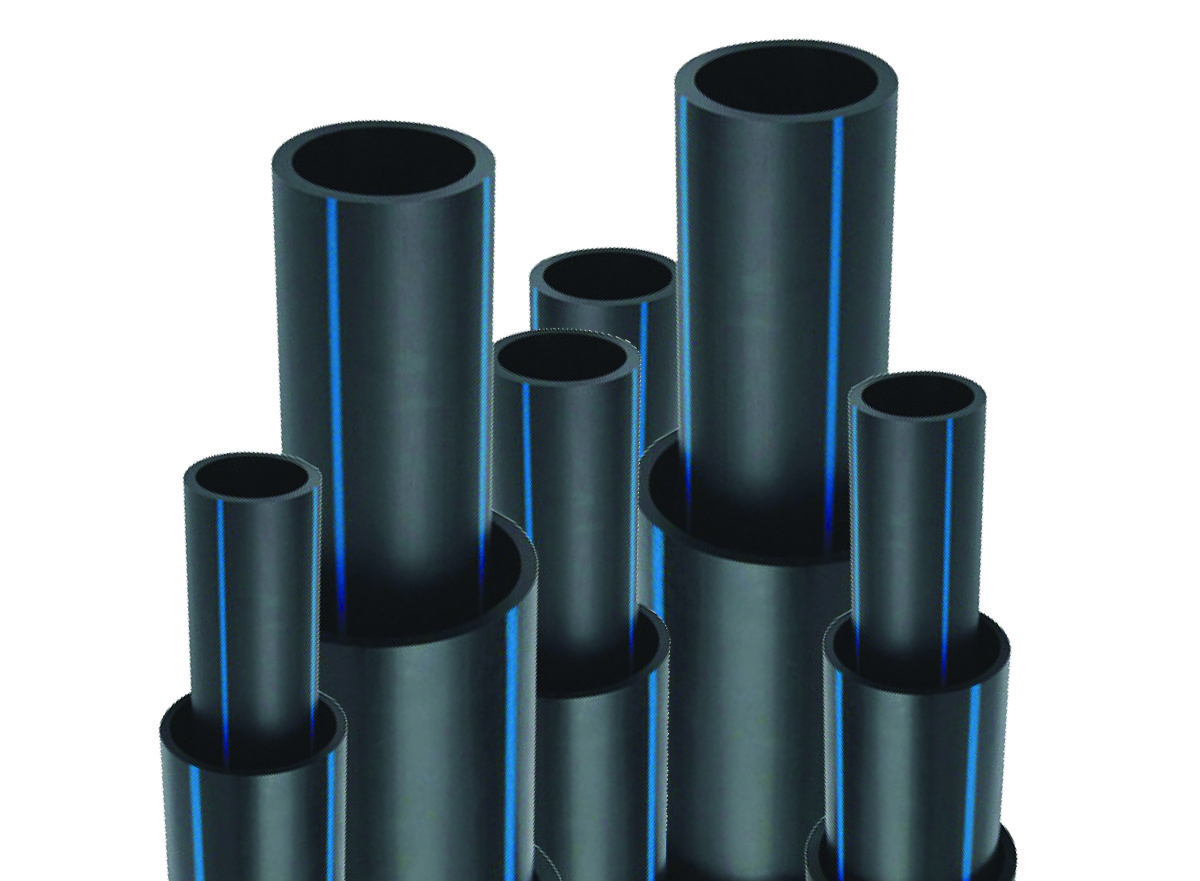FAQs About Texas hdpe pipe manufacturer and Their Products
Discover the Production Refine Behind High-Quality HDPE Pipe and Its Applications
The production procedure of high-grade HDPE pipes is complex and methodical. It starts with the option of basic materials that enhance efficiency. Following this, ethylene goes through polymerization to form material, which is after that formed with extrusion. Quality control is vital, making sure that the last item fulfills rigid standards. However, the trip of HDPE pipelines does not end with manufacturing. Their applications across various industries disclose a broader importance worth checking out.
Comprehending HDPE: Characteristics and Advantages

High-density polyethylene (HDPE) is a functional thermoplastic understood for its resilience and resistance to numerous environmental variables. This product displays outstanding tensile strength, making it appropriate for demanding applications. Its low-density framework adds to a lightweight product, assisting in ease of handling and installation. HDPE additionally showcases remarkable resistance to chemicals, which minimizes deterioration when exposed to rough materials.
The product's low moisture absorption additionally boosts its long life, making it excellent for usage in pipes and storage space containers. Additionally, HDPE is resistant to ultraviolet (UV) radiation, making sure that items preserve their stability even when exposed to sunlight. In addition, its adaptability permits the creation of detailed shapes without jeopardizing stamina. The environment-friendly nature of HDPE, often originated from recycled products, adds to its charm, promoting lasting techniques in production. Overall, these buildings and advantages make HDPE a preferred selection for various commercial and consumer applications.
Raw Product Option for HDPE Manufacturing
The choice of raw products for HDPE production is vital to confirm the end product satisfies the wanted specs and top quality standards. High-density polyethylene (HDPE) is mainly produced from polymerized ethylene, derived from nonrenewable fuel sources such as gas or unrefined oil. The high quality of these feedstocks significantly affects the mechanical and thermal residential properties of the final HDPE.
Ingredients additionally play a significant function in boosting HDPE's performance, consisting of anti-oxidants, UV stabilizers, and colorants, which enhance resilience and resistance to environmental elements. The choice procedure should consider not just the chemical make-up of the raw materials however additionally their processing features to guarantee efficient manufacturing.
Moreover, the sourcing of basic materials need to prioritize sustainability and compliance with ecological policies, as accountable methods are vital in today's market. Ultimately, mindful resources option lays the foundation for generating premium HDPE pipelines suitable for varied applications.
The Extrusion Refine: Forming HDPE Pipe
The extrusion process plays an essential duty in shaping HDPE pipelines, starting with meticulous material preparation methods that ensure excellent flow and consistency. Equally essential is the layout of the die, which directly influences the last measurements and surface area high quality of the pipe. Together, these factors contribute considerably to the performance and top quality of HDPE pipeline production.
Material Prep Work Techniques
Reliable manufacturing of HDPE pipes starts with precise material prep work strategies, especially the extrusion procedure. During this phase, high-density polyethylene material is first dried to remove wetness, making sure excellent circulation qualities. The resin is after that fed into the extruder, where it undertakes home heating and melting, changing right into a viscous state. This home heating process is meticulously managed to maintain the material's stability and efficiency. The liquified HDPE is forced via a die, forming it right into a continuous pipeline type. Appropriate temperature monitoring throughout extrusion is important, as it straight impacts the material's properties and the final product quality. As soon as formed, the HDPE pipeline is cooled and reduced to defined sizes, prepared for subsequent processing and applications.
Die Style Relevance
Precision in die layout plays an essential function in the extrusion procedure of HDPE pipes. The die acts as the final shaping device, straight affecting the pipeline's dimensions, wall density, and surface coating. A properly designed die warranties consistent product circulation, reducing flaws such as irregularities and weak spots. The geometry of the die should be maximized to accommodate the certain properties of HDPE, including its viscosity and thermal actions during extrusion. Furthermore, the cooling price of the product as it goes through the die can considerably influence the pipeline's architectural stability. As a result, purchasing innovative die innovation is vital for producers intending to create high-quality HDPE pipelines that meet industry standards and client expectations.
Quality Assurance Steps in HDPE Production
Although numerous variables influence the quality of HDPE pipe manufacturing, reliable quality control measures are critical to assure consistency and integrity in the end product. Key quality control methods consist of rigorous product assessment, verifying that the raw polyethylene fulfills established criteria for pureness and density. Throughout the extrusion procedure, parameters such as temperature, pressure, and cooling time are carefully monitored to preserve dimensional accuracy and structural integrity
In enhancement, post-production screening is essential; suppliers frequently perform hydrostatic examinations to evaluate the pipeline's toughness and resistance to pressure. Aesthetic inspections for surface problems further improve quality guarantee. Qualification from relevant requirements organizations, like ASTM or ISO, supplies an extra layer of trustworthiness. By carrying out these extensive quality assurance steps, makers can minimize defects, enhance efficiency, and make certain that the HDPE pipelines meet the certain needs of various applications, eventually resulting in client satisfaction and rely on the product.
Applications of HDPE Pipeline Across Industries
HDPE pipes are utilized across various industries as a result of their resilience and flexibility. In water circulation systems, they ensure reliable delivery, while in wastewater management, they supply reliable services for waste transportation. In addition, agricultural irrigation networks benefit from HDPE's resistance to rust and versatility, making it an optimal selection for modern farming methods.

Water Circulation Solutions
A significant variety of sectors depend on high-density polyethylene (HDPE) pipes for efficient water circulation systems. Recognized for their sturdiness and resistance to rust, HDPE pipelines are commonly utilized in metropolitan water supply networks, agricultural irrigation, and commercial applications. Their light-weight nature helps with simple handling and installment, decreasing labor prices and time. In addition, HDPE pipelines can suit various pressure levels, making them ideal for both low and high-pressure systems. Pipe Supplier American Plastics Midland. The versatility of the material permits smooth integration right into existing facilities, reducing the need for considerable excavation. HDPE's resistance to chemical leaching guarantees that the water provided continues to be safe and tidy, making it a perfect option for maintaining the top quality of drinkable water across numerous sectors.
Wastewater Management Solutions
Efficient view it water distribution systems likewise lead the way for ingenious wastewater management solutions, where high-density polyethylene (HDPE) pipelines play a considerable function. Prominent for their sturdiness and resistance to deterioration, HDPE pipes are ideal for moving wastewater in various setups. Their adaptability permits simple installment in complex settings, reducing the need for extensive excavation. In addition, HDPE's smooth indoor surface reduces rubbing, boosting flow rates and effectiveness. These pipelines are additionally immune to chemical leaching, making certain that impurities do not compromise the surrounding environment. Industries, communities, and therapy centers progressively count on HDPE pipes for their reliability and long life, making them a favored choice for contemporary wastewater monitoring systems. This versatility underscores the vital significance of HDPE pipelines throughout various applications.
Agricultural Watering Networks
Agricultural watering networks benefit significantly from the use of high-density polyethylene (HDPE) pipes, which give reliable and reliable water delivery to crops. HDPE pipelines are light-weight, making them easy to deliver and mount, while their flexibility enables for various setups in diverse surfaces. These pipes demonstrate exceptional resistance to corrosion, chemicals, and UV radiation, guaranteeing resilience in rough farming environments. Additionally, their smooth interior surface decreases friction loss, optimizing water flow and decreasing energy prices connected with pumping. The durability of HDPE pipes, often going beyond half a century, contributes to decrease maintenance and replacement expenses. Farmers progressively depend on HDPE pipes to enhance watering performance and advertise lasting agricultural techniques, ultimately leading to enhanced crop yields and source conservation.

Future Trends in HDPE Pipeline Innovation
As the need for lasting and efficient framework expands, improvements in HDPE pipe modern technology are positioned to transform various industries. Emerging fads consist of the assimilation of smart modern technologies, such as sites sensors and IoT capabilities, which help with real-time tracking of pipe problems, decreasing upkeep prices and avoiding leaks. In addition, the growth of innovative production methods, such as 3D printing, is enabling the manufacturing of complex, tailored pipeline styles that accommodate certain job needs.
The emphasis on recycling and round economy practices is driving the development of HDPE pipelines made from recycled products, boosting sustainability. Boosted jointing approaches, such as electro-fusion and mechanical installations, are likewise enhancing setup effectiveness and reliability. Finally, the growing emphasis on ecological regulations is pushing suppliers to adopt greener manufacturing procedures, making sure that HDPE pipelines not just satisfy sector requirements but likewise promote an even more lasting future for framework advancement.
Frequently Asked Questions
Just How Does HDPE Contrast to Other Plastic Products?
HDPE exceeds numerous other plastic website here products concerning longevity, chemical resistance, and flexibility. Its reduced thickness and high tensile toughness make it optimal for various applications, commonly surpassing alternatives in both efficiency and long life.
What Are the Ecological Influences of HDPE Production?
The environmental effects of HDPE production include greenhouse gas emissions, power consumption, and prospective pollution from producing processes. Additionally, inappropriate disposal can cause dirt and water contamination, increasing concerns regarding long-term ecological impacts.
Can HDPE Water Lines Be Recycled?
Yes, HDPE pipelines can be reused. Several facilities approve utilized HDPE for handling, changing it right into new products. This reusing adds to sustainability initiatives, minimizing plastic waste while preserving sources and power in the production cycle.
What Is the Life-span of HDPE Pipes?

Just How Do Temperature Level Variations Influence HDPE Pipe Performance?
Temperature level variations considerably impact HDPE pipe efficiency, influencing flexibility and strength. Heats can bring about softening, while low temperatures might trigger brittleness, ultimately influencing the pipeline's toughness and suitability for different applications in varied atmospheres.